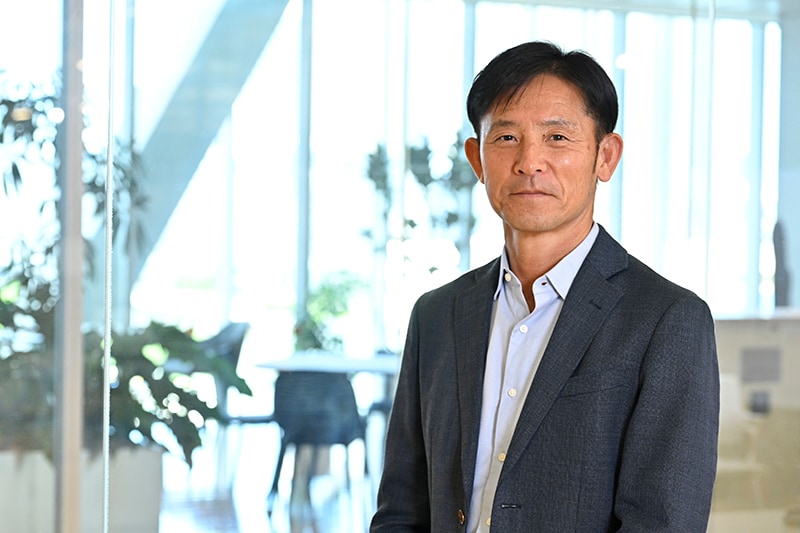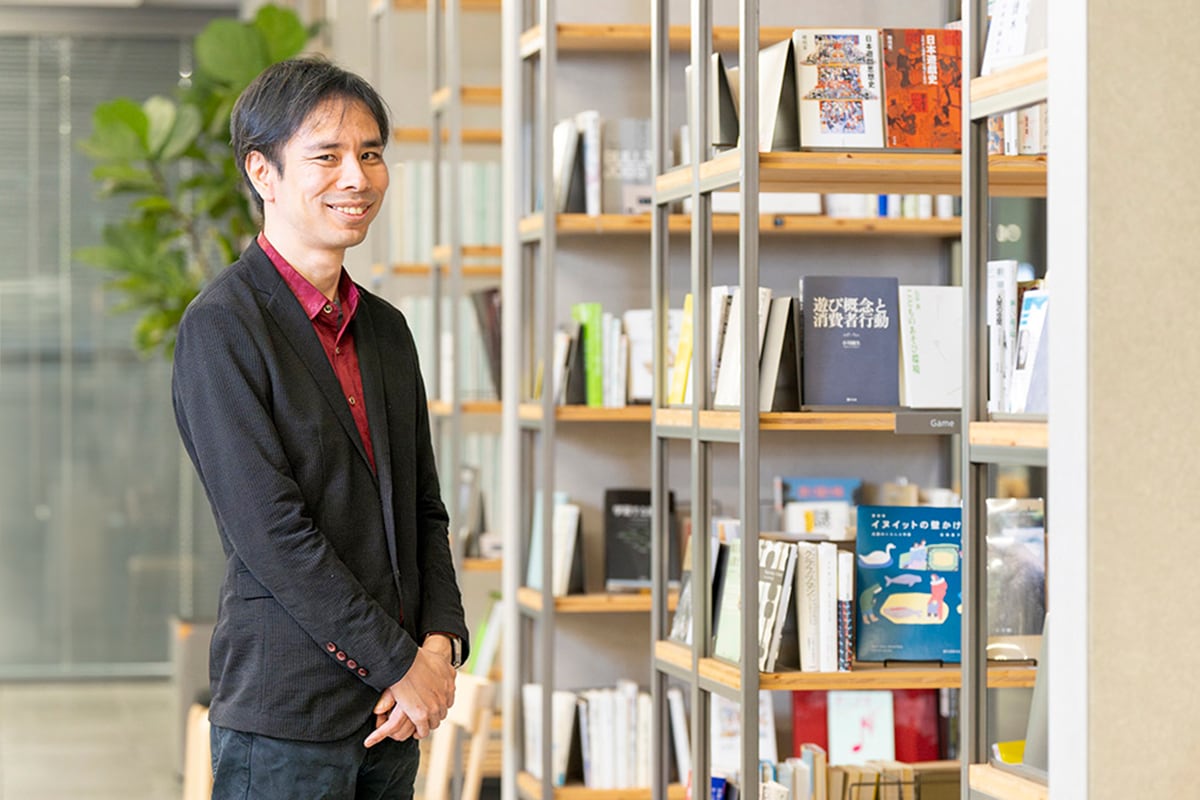People
Series: Inside the Minds of Sony’s Corporate Distinguished Engineers #2 Markus Kamm
Creating indispensable products that improve people’s lives
Aug 27, 2021

In this series, Sony’s top engineers discuss their careers, research, and their ideal profile as an engineer at Sony.
In #2, we hear from Markus Kamm, who specializes in optical systems.
Corporate Distinguished Engineer
Sony certifies its engineers as "Corporate Distinguished Engineer" who formulate and execute technology strategies while identifying signals of change, and support the development of talent in order to ensure Sony’s sustainable growth.
Profile
-

Markus Kamm
Chief Engineer
Distinguished Engineer
Stuttgart Laboratory 1
R&D Center Europe
Sony Europe B.V.
I wanted to create something tangible. That people can really use.
Markus Kamm is Chief Engineer at Sony’s R&D Center in Stuttgart, Germany. His primary focus there is to drive innovation in the design of the optical systems used in products such as projectors, cameras, depth sensors, and spectral sensors.
In 2015, I started developing a simulator for time-of-flight cameras. These cameras are capable of measuring distance between a subject and the camera lens. In other words, they measure depth of a scene. This has a huge number of potential uses, including as sensors for autonomous driving and in gesture detections in gaming and virtual reality for example.
Our simulator is already being used by several groups within the Sony Group to accelerate the development time of products, and I hope to one day make it the industry standard.
Another of my current projects lies in the field of multispectral imaging. Usually, cameras can only detect red, green, and blue, but for some applications, users could benefit from measuring beyond visible light, such as the infrared end of the spectrum. For example, look at agriculture. This technology would allow farmers to measure the vegetation index of plants, telling them exactly how much water or fertilizer their crops need and when to deliver it.
Markus’ consistent passion from his youth ages has driven his career up to today.
As a teenager, I already had a passion for electronics and spent lots of time building model planes and ships. Apart from technical interest, I also played a lot of sports such as skiing. Each winter, I bought a seasonal ticket and went skiing every week.

Markus with his father at a ski resort
I enrolled in a programming course at the age of 15 and began learning how to program in BASIC. I’ve maintained and further developed my programming skills over the years, and I still use them in my work today.
At the time, I was thinking about studying chemistry or physics. Physics was more general, and it included elements from computer science and programming, so I decided to choose physics to get engaged with both. Even back then, I wanted to create something tangible, so my plan was always to work in the industry. Ultimately, I decided on physics as a more general field with a wider range of applications.
After graduating from the University of Freiburg with a Master of Science in Physics, Markus made good on his plans and entered the workforce. His career began with a series of jobs at smaller companies.
I had a short period at an institute where I was working as a scientific staff member just for a temporal period in the field of liquid crystal displays. It was a completely new field for me, and I had to learn most of the necessary skills on the job. But I think this first encounter with optics shaped much of my future career path.
My second job was with a company where I developed simulation software for LCDs, which were quite cutting-edge at the time. This allowed me to further develop my programming skills in C/C++, but this was still software. There was no tangible product, so I moved on once again.
My third job was in the development of projectors for the industrial field where I worked as an optical engineer, developing the optical system of projectors. It was during this period that I was first introduced to Sony as a supplier. The projectors that I was working on included Sony’s liquid crystal micro-displays.
Over the next couple of years, Markus developed a working relationship with Sony, and in the year 2000, Sony invited him to a technology exhibition in Shinagawa, Tokyo. This was Markus’ first visit to Japan.
It was an extremely exciting opportunity. Many people think of Sony as an entertainment company, but they are so much more. I was absolutely blown away by their huge portfolio of semiconductor products.
Another thing that impressed me was their global mindset. It was rather difficult to communicate with some of the other Japanese companies I visited at the time, but Sony had a very global mindset. They were definitely exceptional with their openness and hospitality.

Markus’ first visit to Japan (2000)
One year after returning from my trip, I found a job advertisement for an optical engineer working in the field of projectors at Sony’s R&D Center in Stuttgart. It was the perfect match for my skills; I applied and got the job. That was almost 20 years ago to the day.
When we finally put everything together, it’s a magical moment
The first decade of his career at Sony, Markus spent developing laser projectors for both Rear-Projection TV and Home Cinema front projection. The most memorable moments of his career were the ones he spent assembling the prototypes for these products.
Development for us usually means a long period of theoretical work. We might spend an entire year just doing computer simulations—doing the layout, optimizing the design, estimating the impact of manufacturing tolerances, and so on. Naturally, we also have discussions with suppliers and our colleagues in Japan.
After all of that, we order the components and wait another few months for them to arrive. But then, when we finally put everything together, flip the switch for the first time, and see that image appear on the screen, it’s a very exciting moment. A magical moment. Of course, it’s usually as we predicted, because we have very good tools to simulate that sort of thing, but nevertheless, it’s a culmination of over a years’ worth of effort.

When he visited the SID (Society for Information Display) conference (2004, Seattle USA)
It became increasingly apparent over the years that liquid crystal flat panels would become the mainstream technology for large screen displays instead of rear projectors. Markus decided that he needed a change in direction and shifted his focus to a new area of development.
One thing I can say for Sony is that it supports the creativity of engineers. They are very open-minded and welcome suggestions. Over the course of my career, I’ve been able to propose many new projects, and while not all of them were approved for budget reasons—that’s life—they always appreciated my ideas.
In 2012, I made a proposal to my boss that we merge the Optics Group, of which I was in charge, with the TV Signal Processing Group in Stuttgart. By doing this, we formed the Computational Imaging Group, with combined expertise in both optics and signal processing.
I had been envisioning and working to realize this proposal a few years prior, so this was a major turning point in my career. We were able to launch a number of new projects, including designing imaging optics for medical purposes, such as endoscopes, and multispectral cameras for agricultural applications.

Due to COVID-19 lockdown, Markus spends most of his working hours at home. (Left: His home office Right: His laboratory)
Always follow your strengths,
even if it means going against the mainstream
Today, Markus is one of Sony’s Corporate Distinguished Engineers, an honorary role that involves anticipating and recognizing the signs of change, formulating new technology strategies, and supporting the development of fresh talent at Sony.
In fact, I don’t really see myself as a teacher. I’m more of a learner. I enjoy learning new skills and exploring new ideas, and I think it’s this openness that has helped me push the boundaries of technology at Sony.
If you’re a young engineer, my advice to you is this: Always follow your strengths. Do what you are good at, and do it your way. Even if it means going against the mainstream, you go for it. Nothing was ever invented by doing things the same way as everybody else. For those of you who are keen to do so, Sony supports your challenge.





